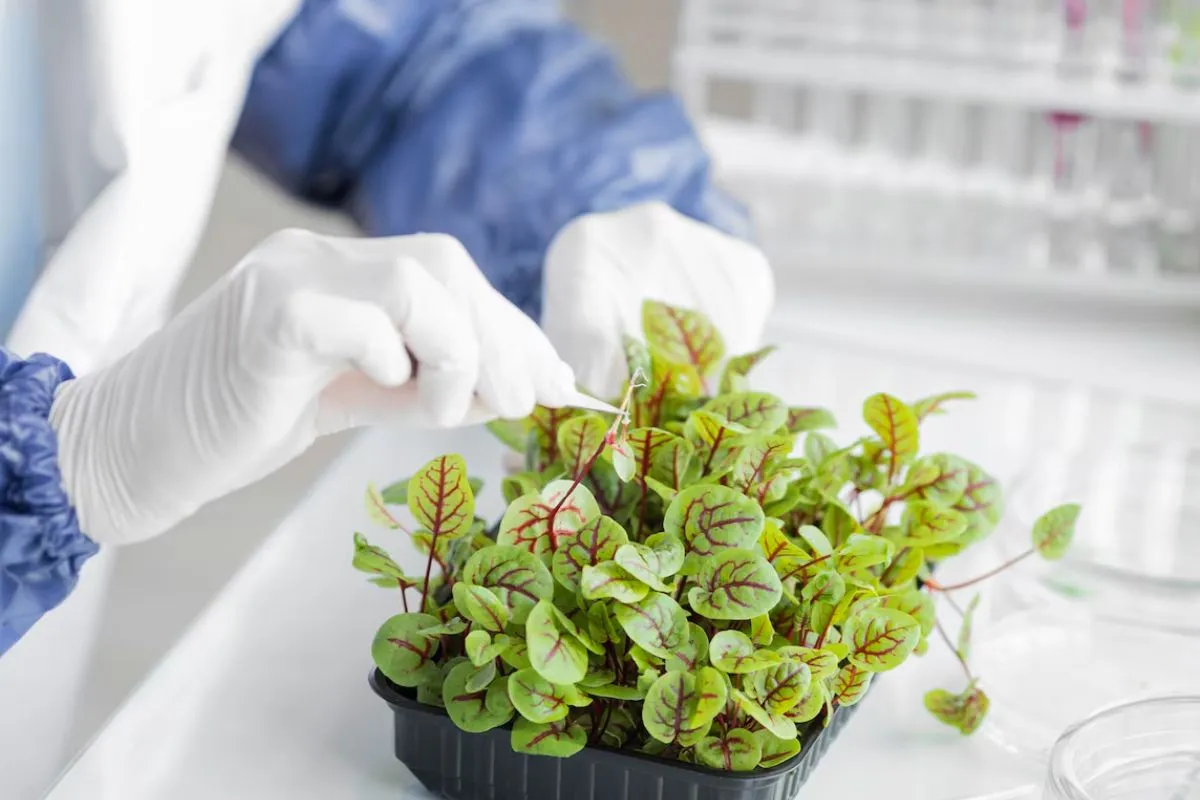Genetic techniques for faster growing edible plants are revolutionizing agriculture. These innovations focus on improving plant growth rates.
They offer numerous benefits like increased productivity and better food security. Let’s explore the strategies and advantages of these techniques.
The Basis of Genetic Techniques for Faster Growing Edible Plants
Genetics play a crucial role in developing faster growing edible plants. By understanding the DNA structure, scientists can enhance plant growth. This insight leads to targeted improvements in crop production, allowing for higher yields and more efficient resource use. Additionally, it can contribute to more sustainable agricultural practices.
Using advanced genetics, plants can become more resilient. This means they can better withstand diseases and harsh environmental conditions. Such improvements are essential for maintaining food security in the face of climate change. Enhanced resilience also reduces the need for chemical pesticides and fertilizers.
Techniques like CRISPR and selective breeding are at the forefront of this innovation. They allow precise edits and selections in plant genes, facilitating the development of desirable traits.
These methods are revolutionizing plant breeding, making it possible to achieve results much faster than traditional techniques. Furthermore, they hold the potential to address global agricultural challenges.
Advances in genetic engineering not only improve crop performance but also open up new possibilities for sustainable farming. By harnessing the power of genetics, we can create crops that are more nutritious, environmentally friendly, and capable of thriving in diverse conditions.
This progress is vital for feeding a growing global population while minimizing the environmental footprint of agriculture.
Selective Breeding
Selective breeding is one of the oldest genetic techniques. It involves choosing parent plants with desirable traits.
Over generations, selective breeding can significantly improve plant characteristics. This includes faster growth and higher yields.
Modern methods have refined this process, making it more efficient. Genetic markers help identify the best plants for breeding.
CRISPR Technology
CRISPR is a groundbreaking genetic technique. It allows precise and targeted modifications to DNA, enabling scientists to make specific changes at desired locations. This precision is crucial for effective genetic engineering.
Using CRISPR, scientists can enhance traits linked to faster growth. This includes optimizing photosynthesis and nutrient uptake, leading to more efficient plant development. These enhancements contribute to higher crop yields and better resource use.
CRISPR is quicker and more accurate than traditional methods. It represents a major leap in plant genetic innovation, accelerating the development of improved crop varieties. Its efficiency opens new possibilities for sustainable agriculture.
The technology’s potential extends beyond agriculture. CRISPR’s applications in medicine, biotechnology, and environmental science are also significant. Continued research and ethical considerations will shape its future impact.
Advantages of Genetic Techniques for Faster Growing Edible Plants
Enhanced Productivity and Efficiency
Genetic techniques for faster growing edible plants contribute to higher crop yields. This boosts food production without needing more land.
Faster growing plants mean multiple harvests per year. This efficiency can help meet global food demand.
Innovations in genetics also reduce resource usage. Plants can grow with less water and fertilizer, enhancing sustainability.
Increased Resilience and Adaptability
Genetic techniques help develop resilient plants. These varieties are more adaptable to climate changes, ensuring they can thrive in diverse environments. This adaptability is crucial for maintaining agricultural productivity.
Stronger plants can resist pests and diseases. This reduces losses and dependency on chemicals, promoting more sustainable farming practices. It also lowers the environmental impact of agriculture.
Climate-resilient crops ensure a consistent food supply, even in extreme conditions. This strengthens food security worldwide and supports the stability of global food markets. Investing in these crops is vital for future-proofing agriculture.
These advancements are essential for addressing the challenges of a changing climate. Continued research and development in genetic techniques will further enhance crop resilience. Together, these efforts will secure a sustainable food future for all.
Environmental and Economic Benefits
Using less water and fertilizers has environmental benefits. It reduces the ecological footprint of agriculture.
Higher efficiency means lower costs for farmers. This improves their economic stability.
Sustainable practices promoted by genetic techniques support biodiversity. This ensures long-term agricultural health.
Implementing Genetic Innovations in Agriculture
Adopting Genetic Techniques
Farmers need to adopt these innovations for maximum benefits. They must integrate advanced genetic techniques into their practices. Education and training are essential for successful implementation and understanding.
Government policies can facilitate this transition. Providing subsidies and support programs encourages the use of genetic technologies. These incentives can help mitigate initial costs and promote widespread adoption.
Collaboration between scientists and farmers is crucial. Regular communication and feedback loops ensure practical and effective implementation. This partnership enhances innovation and drives agricultural advancement.
Farmers also benefit from field demonstrations and workshops. These hands-on experiences make the transition smoother. Together, these efforts will lead to a more sustainable and productive agricultural sector.
Overcoming Challenges
Despite the benefits, there are challenges to using genetic techniques. High costs can be a barrier for some farmers.
Regulatory hurdles must be addressed. This includes ensuring food safety and ethical considerations.
Public perception of genetic modification needs to improve. Transparency and education can build trust in these innovations.
Future Prospects
The future of genetic techniques is promising. Ongoing research aims to refine these technologies further.
New innovations are being developed rapidly. These will continue to enhance food production and sustainability.
Global collaboration can accelerate progress. Sharing knowledge and resources will benefit all.
Summary and Next Steps
Genetic techniques for faster growing edible plants offer transformative benefits. These innovations can lead to shorter growth cycles and increased harvest frequency. They enhance productivity, resilience, and sustainability, ultimately supporting food security.
Adopting these innovations requires collaboration and support. This involves partnerships between scientists, farmers, and policymakers. Overcoming challenges such as regulatory hurdles and public acceptance will ensure widespread adoption.
Future research promises even greater advancements. Emerging technologies like CRISPR and gene editing hold immense potential. Embracing these techniques is crucial for a secure food future, ensuring that agriculture can meet the demands of a growing population.
Frequently Asked Questions
What are genetic techniques for faster growing edible plants?
These are technologies like CRISPR and selective breeding. They modify plant genes to enhance growth rates and yield.
Why are genetic techniques important in agriculture?
They boost productivity and sustainability. This helps meet global food demand and reduces environmental impact.
How does CRISPR technology work in plants?
CRISPR allows precise edits to plant DNA. It can enhance traits such as nutrient usage and disease resistance.
What are the benefits of using genetic techniques for plants?
Benefits include increased yield, resilience to diseases, and efficiency. This supports better food security and farmer stability.
What are the challenges of implementing these techniques?
Challenges include high costs and regulatory issues. Public perception and understanding also need improvement.



